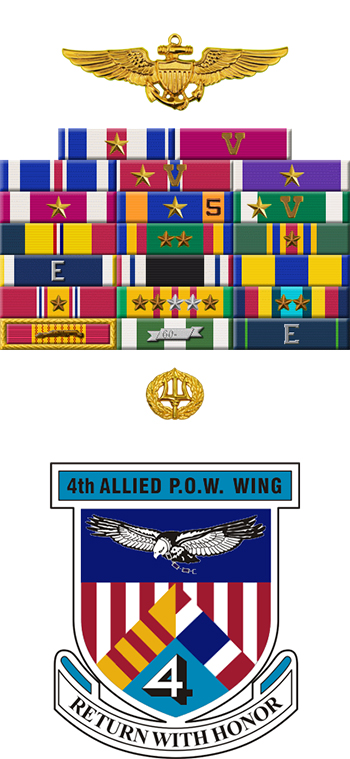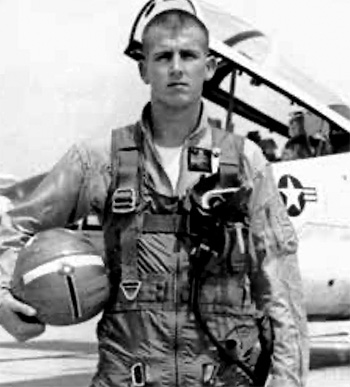
|
Lewis Irving "Irv" Williams, Jr. |
 |
|||
| Rank, Service | ||||
Captain O-6, U.S. Navy |
||||
| Veteran of: | ||||
|
||||
| Tribute: | ||||
Irv Williams was born on June 25, 1943, in Nashville, Georgia, and he grew up in Jacksonville, Florida. After completing two years at the University of Florida, he entered the Aviation Cadet Program of the U.S. Navy on January 18, 1964, and entered flight training in May 1964. He was commissioned an Ensign in the U.S. Navy on March 16, 1965, and was designated a Naval Aviator on July 23, 1965. His first assignment was to VA-42 at NAS Oceana, Virginia, for Fleet Replacement Pilot training in the A-6A Intruder from August 1965 to February 1966, followed by service as an A-6A pilot and Weapons Officer with VA-75 at NAS Oceana, and deployed aboard the aircraft carrier USS Independence (CVA-62) from February to July 1966. LTJG Williams next served as an A-6A pilot and Line Division Officer with VA-85 at NAS Oceana and deployed aboard the aircraft carrier USS Kitty Hawk (CVA-63) from July 1966 until he was forced to eject from his stricken aircraft over North Vietnam and was taken as a Prisoner of War on April 24, 1967. After spending 2,142 days in captivity, LT Williams was released during Operation Homecoming on March 4, 1973. He was briefly hospitalized to recover from his injuries at the Naval Hospital in Jacksonville, Florida, and then went through Jet Refresher Training with VA-45 at NAS Jacksonville, Florida, from October 1973 to January 1974. LCDR Williams went through A-7E Corsair II Fleet Replacement Pilot training with VA-174 at NAS Cecil Field, Florida, from January to August 1974, followed by service as an A-7E pilot with VA-37 at NAS Oceana, Virginia, and deployed aboard the aircraft carrier USS Saratoga (CV-60) from August 1974 to December 1976. CDR Williams attended the University of North Florida to complete his bachelor's degree from January 1977 to June 1978, and then as an instructor pilot and Executive Officer with VA-174 at NAS Cecil Field from July 1978 to August 1980. He attended Naval War College at Newport, Rhode Island, from August 1980 to June 1981, and then served as an A-4 Skyhawk pilot and Executive Officer of VA-45 at NAS Key West, Florida, from July 1981 to July 1982. His next assignment was as Commanding Officer of VA-45 at NAS Key West from July 1982 to January 1984, followed by Ship Navigator Training from January to March 1984. He served as Navigator aboard the aircraft carrier USS Saratoga (CV-60) from April 1984 to June 1986, followed by 4 years in the Office of the Assistant Chief of Naval Operations for Air Warfare at the Pentagon, where he served as Supersonic Adversary Aircraft and Aerial Targets Program Coordinator, Deputy Head of the Aircraft Requirements Branch, Anti-Air Warfare Requirements Branch Head, and Strike/Anti-Surface Warfare Requirements Branch Head between June 1986 and April 1990. CAPT Williams' final assignment was as Commanding Officer of NAS Alameda, California, from June 1990 until his retirement from the U.S. Navy on July 1, 1992. During his aviation career in the Navy, CAPT Williams accumulated 2,737 flight hours, 379 carrier landings, and he flew 62 combat missions during the Vietnam War. |
||||
|
||||

